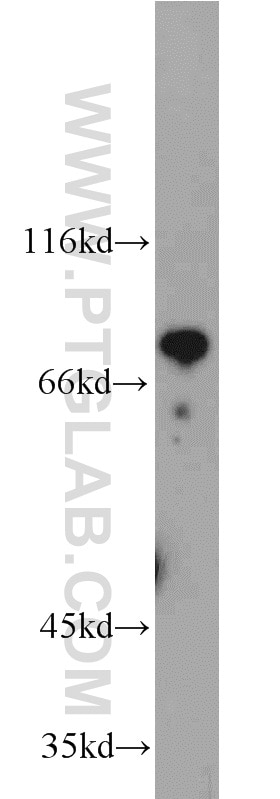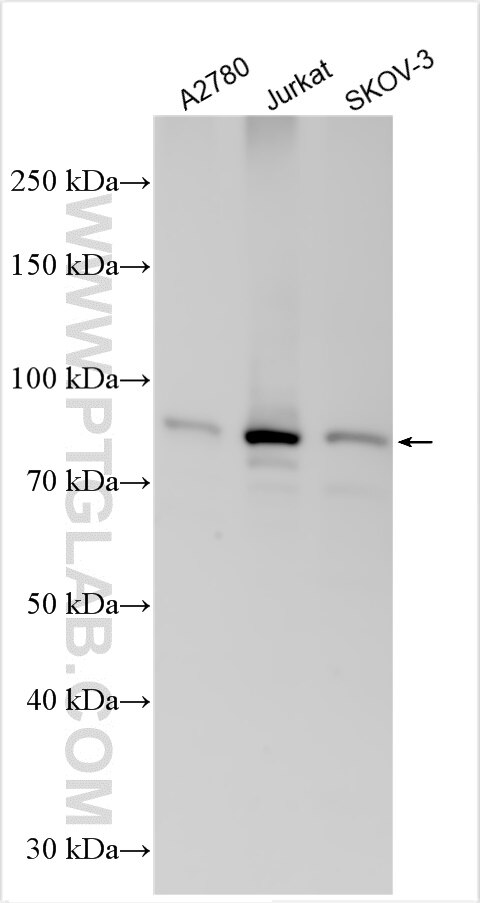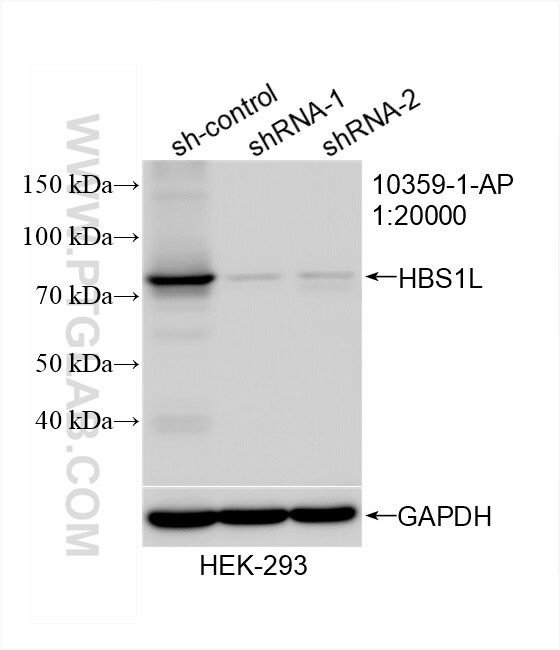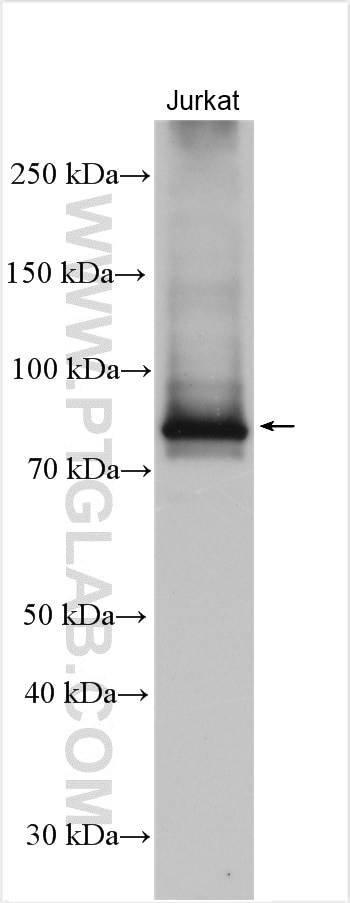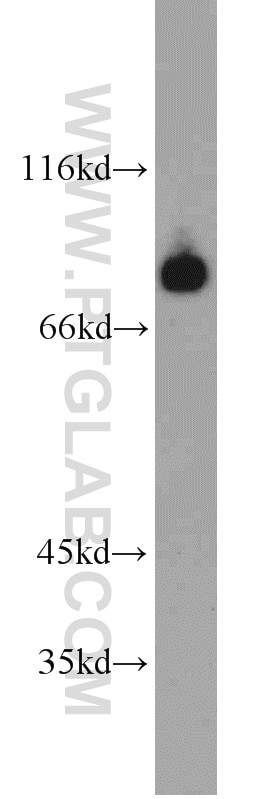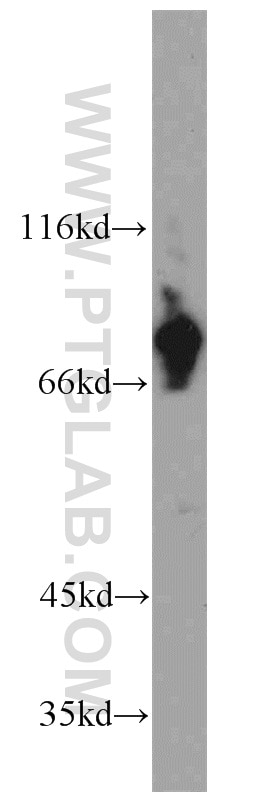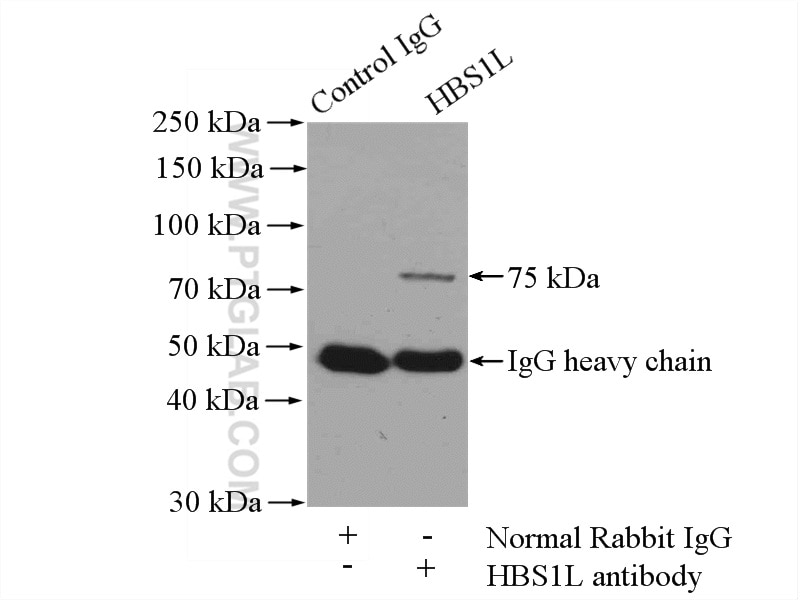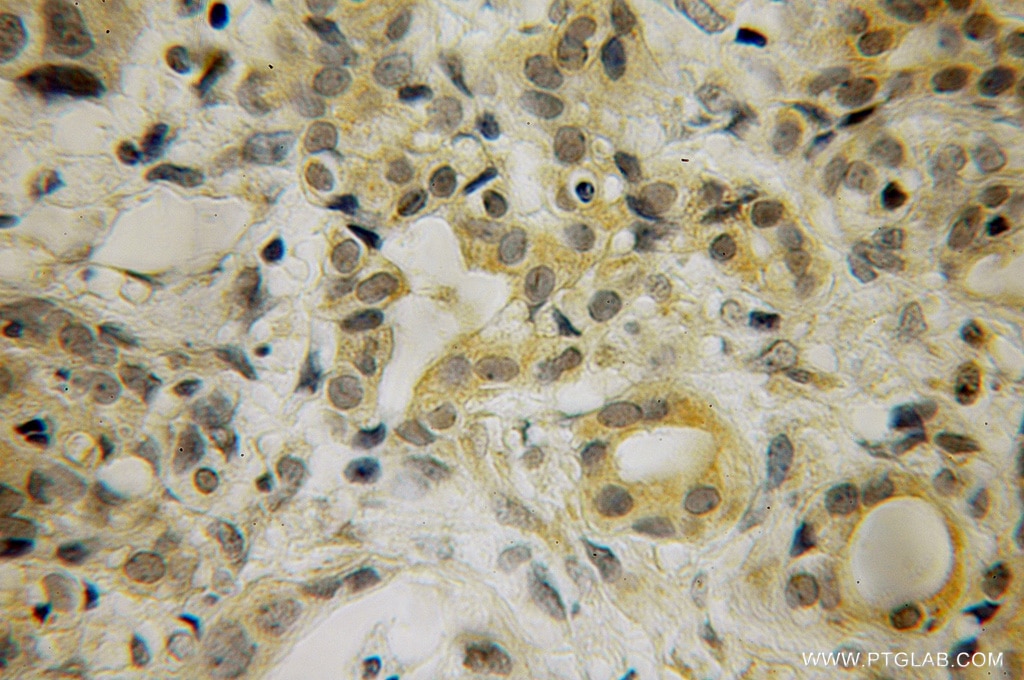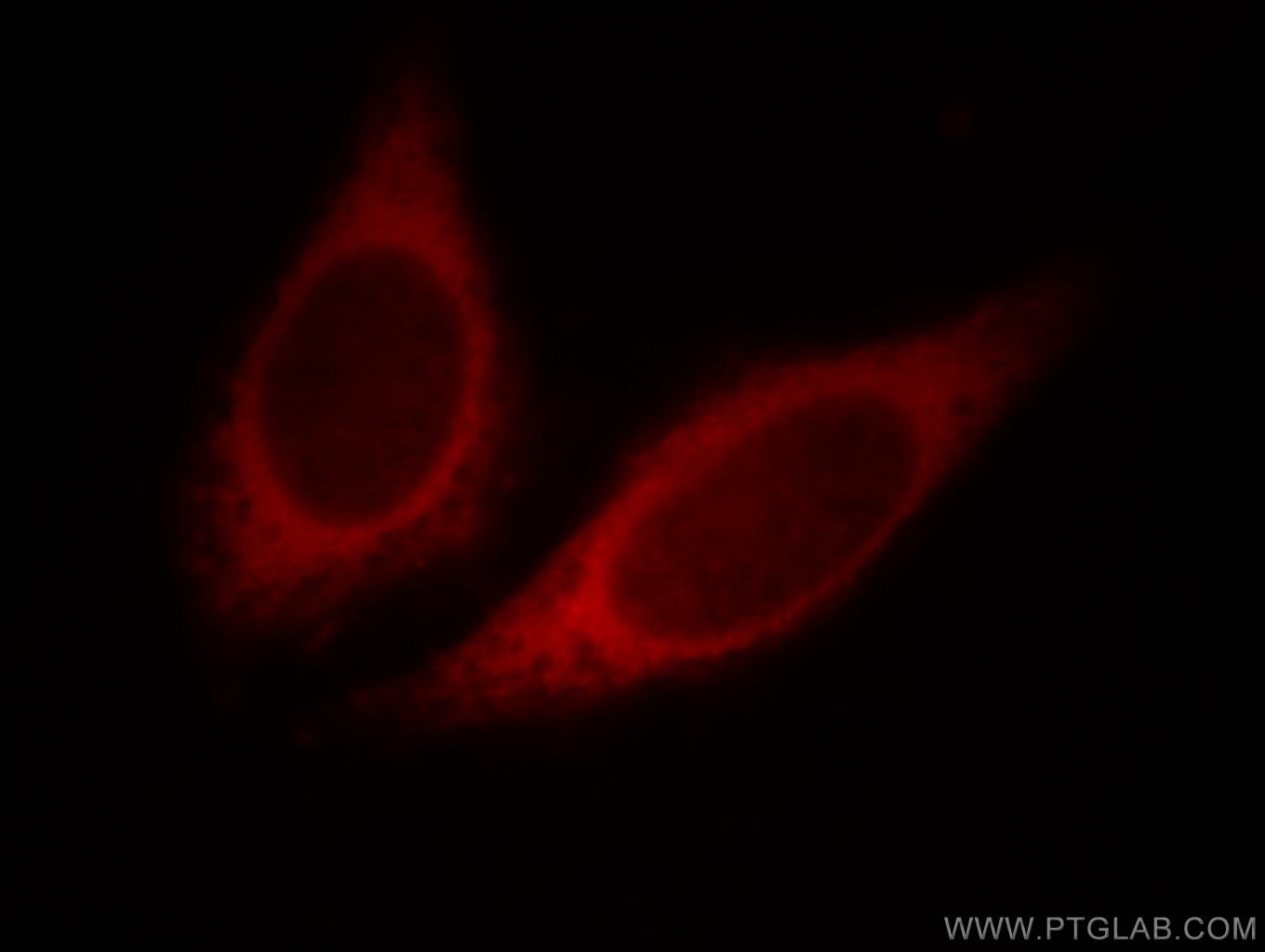- Featured Product
- KD/KO Validated
HBS1L Polyklonaler Antikörper
HBS1L Polyklonal Antikörper für WB, IHC, IF/ICC, IP, ELISA
Wirt / Isotyp
Kaninchen / IgG
Getestete Reaktivität
human, Maus
Anwendung
WB, IHC, IF/ICC, IP, ELISA
Konjugation
Unkonjugiert
Kat-Nr. : 10359-1-AP
Synonyme
Galerie der Validierungsdaten
Geprüfte Anwendungen
| Erfolgreiche Detektion in WB | Jurkat-Zellen, A2780-Zellen, HEK-293-Zellen, Maushirngewebe, SKOV-3-Zellen |
| Erfolgreiche IP | Maushirngewebe |
| Erfolgreiche Detektion in IHC | humanes Pankreaskarzinomgewebe Hinweis: Antigendemaskierung mit TE-Puffer pH 9,0 empfohlen. (*) Wahlweise kann die Antigendemaskierung auch mit Citratpuffer pH 6,0 erfolgen. |
| Erfolgreiche Detektion in IF/ICC | HepG2-Zellen |
Empfohlene Verdünnung
| Anwendung | Verdünnung |
|---|---|
| Western Blot (WB) | WB : 1:5000-1:50000 |
| Immunpräzipitation (IP) | IP : 0.5-4.0 ug for 1.0-3.0 mg of total protein lysate |
| Immunhistochemie (IHC) | IHC : 1:20-1:200 |
| Immunfluoreszenz (IF)/ICC | IF/ICC : 1:10-1:100 |
| It is recommended that this reagent should be titrated in each testing system to obtain optimal results. | |
| Sample-dependent, check data in validation data gallery | |
Veröffentlichte Anwendungen
| KD/KO | See 3 publications below |
| WB | See 7 publications below |
Produktinformation
10359-1-AP bindet in WB, IHC, IF/ICC, IP, ELISA HBS1L und zeigt Reaktivität mit human, Maus
| Getestete Reaktivität | human, Maus |
| In Publikationen genannte Reaktivität | human, Maus |
| Wirt / Isotyp | Kaninchen / IgG |
| Klonalität | Polyklonal |
| Typ | Antikörper |
| Immunogen | HBS1L fusion protein Ag0388 |
| Vollständiger Name | HBS1-like (S. cerevisiae) |
| Berechnetes Molekulargewicht | 75 kDa |
| Beobachtetes Molekulargewicht | 75 kDa |
| GenBank-Zugangsnummer | BC001465 |
| Gene symbol | HBS1L |
| Gene ID (NCBI) | 10767 |
| Konjugation | Unkonjugiert |
| Form | Liquid |
| Reinigungsmethode | Antigen-Affinitätsreinigung |
| Lagerungspuffer | PBS mit 0.02% Natriumazid und 50% Glycerin pH 7.3. |
| Lagerungsbedingungen | Bei -20°C lagern. Nach dem Versand ein Jahr lang stabil Aliquotieren ist bei -20oC Lagerung nicht notwendig. 20ul Größen enthalten 0,1% BSA. |
Hintergrundinformationen
HBS1L (HBS1-like), also known as EF-1a or ERFS, is a 684 amino acid protein that belongs to the GTP-binding elongation factor family and exists as multiple alternatively spliced isoforms. Expressed in kidney, brain, heart, placenta, liver, muscle and pancreas, HSB1L is thought to play a role in controlling fetal hemoglobin levels, specifically influencing platelet, monocyte and erythrocyte hemoglobin content. The gene encoding HBS1L maps to a locus on human chromosome 6 that is associated with sickle cell anemia and beta-thalassemia, suggesting a role for HBS1L in the pathogenesis of blood disorders.This antibody specifically recognizes the 75kd human HBS1L protein.
Protokolle
| Produktspezifische Protokolle | |
|---|---|
| WB protocol for HBS1L antibody 10359-1-AP | Protokoll herunterladen |
| IHC protocol for HBS1L antibody 10359-1-AP | Protokoll herunterladen |
| IF protocol for HBS1L antibody 10359-1-AP | Protokoll herunterladen |
| IP protocol for HBS1L antibody 10359-1-AP | Protokoll herunterladen |
| Standard-Protokolle | |
|---|---|
| Klicken Sie hier, um unsere Standardprotokolle anzuzeigen |
Publikationen
| Species | Application | Title |
|---|---|---|
Mol Cell Deep sequencing shows multiple oligouridylations are required for 3' to 5' degradation of histone mRNAs on polyribosomes. | ||
Elife Defects in translation-dependent quality control pathways lead to convergent molecular and neurodevelopmental pathology. | ||
Biochem J Eukaryotic elongation factor 2 kinase regulates the cold stress response by slowing translation elongation. | ||
J Biol Chem RNA exosome complex regulates stability of Hepatitis B Virus's X-mRNA transcript in a Non-Stop mediated (NSD) RNA quality control mechanism.
| ||
PLoS Genet Mammalian Hbs1L deficiency causes congenital anomalies and developmental delay associated with Pelota depletion and 80S monosome accumulation.
| ||
Immunity Ribosome-rescuer PELO catalyzes the oligomeric assembly of NOD-like receptor family proteins via activating their ATPase enzymatic activity
|
